John Hurrell – 28 March, 2012
This excellent exhibition had sensually seductive contributions (Clemens and Rogers) mixed with spatially diffuse sculpture / music (Nicoll), and optically dry but ideationally evocative, more conceptual items (Western and Grobelny). The last two took time to mentally resonate but their social implications were propelled along by the context created by the other work.
Auckland
Eddie Clemens, Michael Grobelny, Guy Nicoll, Scott Rogers, Blaine Western
Force Things (Part of the 2012 Curatorial Season)
Curated by Sonya Lacey and Vera Mey
22 March - 24 March 2012
In this the third brief exhibition (in a series of seven) at St Paul Street’s Gallery Three - looking at varied approaches to curating - five artworks were picked by Vera Mey and Sonya Lacey to explore notions of product prototype and functional ambiguity. Varied and minimal these Force Things drew out design qualities that involved visual, aural and social properties often mixed with circularity.
Conspicuously suspended on a darkened wall Eddie Clemens’ single broom - with a thick wad of intensely glowing, fibre optic bristles - changed its colour restlessly, shuffling between at least ten variations. Its radiating chroma had a piercing, icy silvery intensity that only rarely became hot with yellowy reds. As a robust and functional broom that was maybe also a table lamp, its mesmerising colour sequences seemed to vary as if systematically random and not on a loop, but you weren’t sure. It appeared to have magical properties, and perhaps referenced the sorcerer’s apprentice.
Guy Nicoll contributed a sound work that was also an aural sculpture or even a multi-part painting. His five black speakers of varying size were set far apart on separate walls at different heights - intermingling with the other works. The looped series of piano notes that they emitted were mixed so that the sound was spread around the L-shaped space, with some were clustered together in certain speakers and others far removed. The middle, high and low range notes were split so the experience was immersive and strongly spatial. It really made you aware of the architecture and the gallery’s floor plan.
An animated video from Scott Rogers had a loop that paralleled Nicoll’s sound piece and a translucent silvery grey light that mimicked Clemens’ broom bristles. It showed a large glass goblet in a brass stand with a hollow stem that curved upwards to become a spout aimed back into itself. This continually poured a stream of water back into its clear cup causing the continually circulating liquid to sparkle and infuse the screen with a shimmering rippling light.
Force Things‘ two remaining works were a little different. They required more overt social interaction to succeed as constructed functioning objects.
Michael Grobelny’s Soap Box consisted of a beautiful little amplifier and set of speakers made of cedar, small wine bottles and electronic components. No sound was heard though, for this was not routinely demonstrated unless you happened to have an MP3 player with you, or asked a gallery assistant if they had one. That was the point: you could use this object even though you couldn’t sweep with Clemens’ broom or empty Rogers’ depicted glass flask. The wine bottles I assume were a symbol of social conviviality, so with only non-headphone sound provided, the purpose of the technology could be shared - possibly over more alcohol.
Blaine Western’s sculpture was an awning installed above the Symonds St doorway that might also have been be a canvas functioning as a white painting. As a device to keep rain off those standing underneath, it (as a designed object) needed vertical figures to protect and be conceptually complete. If those people planned to make more awnings then we had the reflexive loop detected in the other artworks.
Lacey and Mey had organised an elegant show that had sensually seductive contributions (Clemens and Rogers) mixed with spatially diffuse sculpture / music (Nicoll) and optically dry but ideationally evocative, more conceptual items (Western and Grobelny). The latter (the awning and ‘bottle-speakers’) took time to mentally resonate but their social implications were propelled along by the context created by the other work. There was also a nuggetty little essay and catalogue/map that clearly identified each item. A successful, extremely well implemented project.
John Hurrell
Recent Comments
John Hurrell
Not with computer animation. This digital wizardry is gorgeous.
Andrew Paul Wood
"This continually poured a stream of water back into its clear cup causing the continually circulating liquid to sparkle and ...
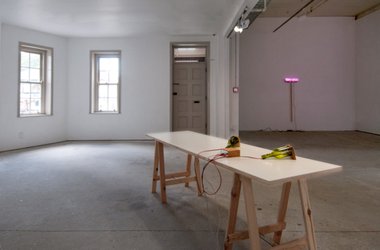
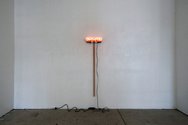
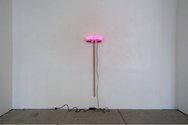
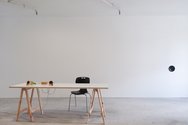
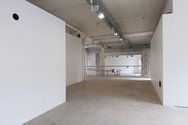
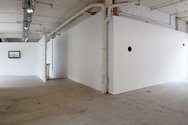
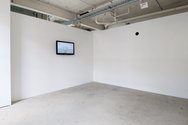

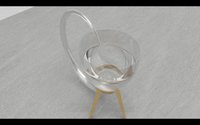
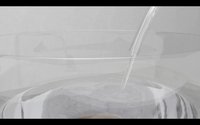


 Two Rooms presents a program of residencies and projects
Two Rooms presents a program of residencies and projects Advertising in this column
Advertising in this column



This Discussion has 2 comments.
Comment
Andrew Paul Wood, 1:27 a.m. 29 March, 2012 #
"This continually poured a stream of water back into its clear cup causing the continually circulating liquid to sparkle and infuse the screen with a shimmering rippling light."
Really? Because I though Perpetual Motion was impossible.
John Hurrell, 8:15 a.m. 29 March, 2012 #
Not with computer animation. This digital wizardry is gorgeous.
Participate
Register to Participate.
Sign in
Sign in to an existing account.